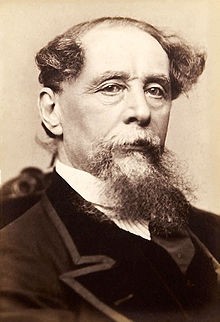Folks,
It looks like Patty is a bit troubled.......
When she was younger, Patty was always annoyed by cranky old people, and now she was worrying that she might become one. The trigger that was making her cranky was what students know and don’t know. It all started when a colleague showed her the “Texas Tech Politically Challenged Video.”
"How could so many students not know who won the American Civil War, who the Vice President is, or who the United States won its freedom from?" She thought.
Some of her colleagues felt the video was staged, but the producers came up with a response video that strongly suggested that it was not. What was even more unsettling was the fact that all of the students knew who Snooki was and who Brad Pitt’s wife was.
Some of Patty’s statistics students got wind of this video and decided to make a similar video at Ivy University. The results were mostly comforting: 49 out of 50 students knew who won the Civil War, and the one student who didn't was from India. They also did well with some other questions, 85% knowing that Joseph Stalin was the leader of the Soviet Union in World War II, and a high number knew that Joe Biden was the VP.
But Patty was most troubled that almost 50% did not know who wrote “A Christmas Carol.” She had discussed the topic with Rob and was further annoyed that he didn’t seem as troubled as she was. Rob pointed out that some international students might not have had English literature in their studies, and being a story about Christmas, it could be a cultural thing. Patty was unconvinced by his arguments. It still seemed troubling to her.

Figure: Charles Dickens in 1867, twenty-four years after he authored "A Christmas Carol."
As she was mulling over these thoughts, the phone rang. It was Mike Madigan, CEO of her former employer, ACME.
“Hey, Patty, it’s Mike,” Madigan said cheerfully. “I need your help with a statistic problem. It might be good if Rob and Pete were involved, so could we do a teleconference?”
Patty scheduled the teleconference for later in the day. When the time came, Pete and Rob were in Patty’s office and she called Madigan. After exchanging pleasantries, Madigan got to the point.
“We have a demanding customer from the military,” Mike started. “They have a “Zero Defects” program and want to know how we can guarantee it after field exposure.”
“To clarify, you mean guarantee zero defects for units in the field?” Pete asked.
“Yeah,” Mike replied.
“The way I figure it, if we have 20 units in the field and none fail, we can say with 95% confidence that we have zero defects, because one unit is 5% of 20, and if none fail, that means we can be 100%-5% or 95% confident,” Mike said.
Patty instinctively reached for the mute button, as Rob and Pete went into hysterics. She glared at both of them.
“Hello, hello, are you there?” Mike asked as he heard no response.
Finally, with Patty continuing to glare, Pete and Rob had stopped laughing. So she unmuted the phone.
“Sorry Mike, the failure rate in the situation you described is that you can be 95% confident that is it less than or equal to 15%” Patty replied.
The other end of the conference call was quiet for a while and finally Mike answered,
“Yikes! OK, can you explain?”
“Patty and I have developed the math to explain how to calculate confidence limits on field failure rates,” Rob responded. “For 95% confidence we have developed what we call, The Rule of 3/N.”
“How does it work?” Mike asked.
“If you have N samples in the field, and none have failed, you can say with 95% confidence that your failure rate is 3/N or less. As an example, let’s say you have 300 units in the field and none fail. You can then say with 95% confidence that the failure rate is less than or equal to 3/300 = 1/100 = 0.01 = 1%.”
“If we have 300 units with no fails, we can only have confidence in a 1% failure rate?” Mike groaned.
“One percent or less, with 95% confidence,” Patty chimed in.
Is demonstrating a 0% failure rate possible? Will Patty and the team find a way to help Mike? Stay tuned for more details.
Cheers,
Dr. Ron


